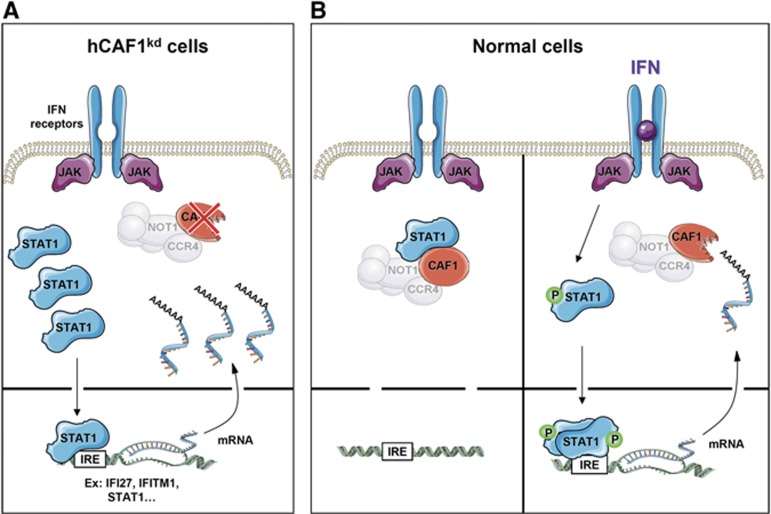Figure 7.
Model for dual regulatory functions of hCAF1 in IFN signalling. (A) In hCAF1kd cells, hCAF1 depletion prevents the trapping of STAT1 in the cytoplasm, permitting that a fraction of u-STAT1 migrates in the nucleus and activates the expression of many target genes, including STAT1 itself. In parallel, u-STAT1 activates the expression of several target genes whose stability is prolonged and enhanced by the loss of hCAF1deadenylase activity in these cells, leading to their accumulation. (B) Under physiological conditions and in the absence of IFN induction, hCAF1 can control STAT1 trafficking by interacting with the latent form of STAT1 in the cytoplasm. IFN activation leads to the release of STAT1 and its phosphorylation. Phosphorylated STAT1 forms homodimers or heterodimers, move to the nucleus and induce the transcription of target genes to allow rapid and transient activation of immune response signalling. hCAF1 could also participate in the extinction of IFN signal via its deadenylase activity by speeding up the degradation of several STAT1-regulated mRNAs, which may constitute new physiologically relevant targets of hCAF1. The light grey colour of the CCR4–NOT complex indicates that its participation is not yet completely established.

